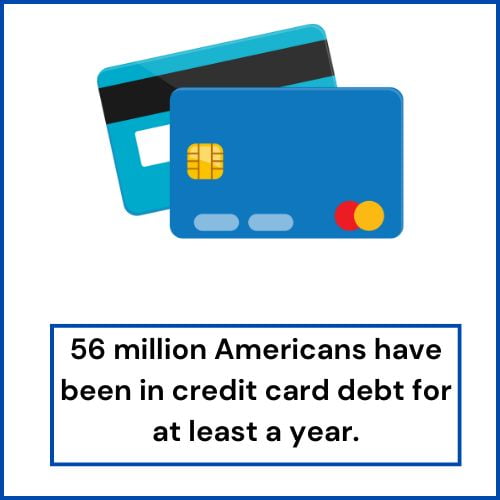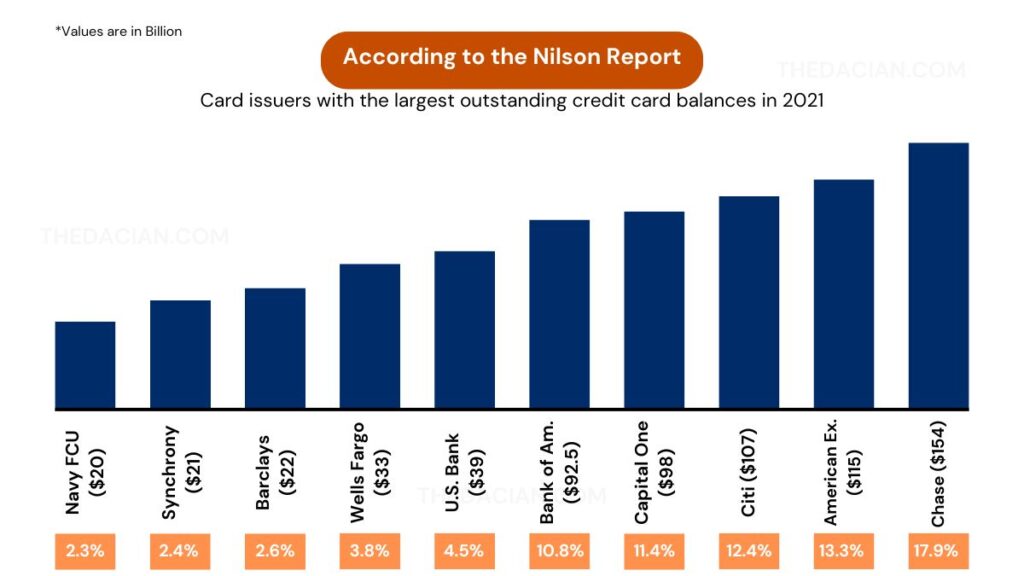Falling into debt is easy, but climbing out can feel like an insurmountable task. If you’re feeling trapped, you’re not alone. Many people face the same struggles, but the good news is that there are concrete steps you can take to regain control of your finances. This article will provide you with 30 practical ways to get out of the debt trap and help you on your journey towards financial freedom.
Understanding the Debt Trap
In today’s fast-paced world, the allure of easy credit and instant gratification can lead many into the perilous cycle of debt. The debt trap is a situation where a person takes on more debt than they can handle, often leading to financial instability and stress. Understanding how to avoid and overcome this trap is crucial for maintaining financial health and achieving long-term goals.
What is a Debt Trap?
A debt trap occurs when individuals or businesses take on new debt to repay existing debts, leading to an unsustainable cycle of borrowing and repayment. This cycle often results in higher interest rates, increased monthly payments, and ultimately, an inability to pay off the principal amount. The debt trap is characterized by:
- High-interest Rates: Borrowers end up paying more in interest than the principal amount borrowed.
- Constant Borrowing: New loans are taken to repay existing ones, creating a continuous loop of debt.
- Reduced Creditworthiness: As debt levels rise, credit scores drop, making it difficult to secure favorable loan terms in the future.
Common Causes of the Debt Trap
Understanding the causes of a debt trap is the first step towards avoiding it. Here are some common factors:
1. Overreliance on Credit Cards
Credit cards offer convenience but can quickly lead to high debt levels due to their high-interest rates. Many fall into the trap of making minimum payments, which barely cover the interest, leading to a growing balance.
2. Lack of Financial Planning
Without a clear budget and financial plan, it’s easy to overspend and rely on credit to cover expenses. This lack of planning often results in taking on more debt than one can handle.
3. Unforeseen Expenses
Unexpected expenses, such as medical bills or car repairs, can force individuals to take out loans or use credit cards. Without an emergency fund, these expenses can quickly lead to a debt trap.
4. Low Income and High Living Costs
A mismatch between income and living expenses can lead to borrowing to cover basic needs. Over time, this borrowing accumulates, leading to a cycle of debt.
Impact of the Debt Trap
The impact of falling into a debt trap can be severe, affecting various aspects of life:
1. Financial Stress
Constant worry about debt repayment can lead to significant stress and anxiety, affecting mental health and overall well-being.
2. Lower Credit Scores
As debt levels rise and payments are missed, credit scores drop. This makes it harder to secure loans, rent apartments, or even get certain jobs.
3. Limited Financial Freedom
High debt levels limit financial freedom, making it difficult to save for the future, invest, or make significant purchases such as a home or car.
4. Increased Costs
The longer the debt remains unpaid, the higher the interest and fees, leading to an overall increase in the cost of the original amount borrowed.
How to Overcome a Debt Trap
If you find yourself in a debt trap, there are steps you can take to regain control:
1. Assess Your Financial Situation
List all debts, including amounts owed, interest rates, and minimum payments. This provides a clear picture of your financial situation and helps prioritize repayment.
2. Create a Debt Repayment Plan
Develop a plan to pay off debts, focusing on high-interest debts first. Consider strategies such as the debt snowball (paying off small debts first) or debt avalanche (paying off high-interest debts first).
3. Negotiate with Creditors
Contact creditors to negotiate lower interest rates or more favorable repayment terms. Many creditors are willing to work with borrowers to ensure they can repay their debts.
4. Consolidate Debt
Debt consolidation involves combining multiple debts into a single loan with a lower interest rate. This simplifies repayment and can reduce overall interest costs.
5. Avoid Taking on New Debt
Focus on repaying existing debts without taking on new ones. Cut unnecessary expenses and find ways to increase income, such as taking on a part-time job or selling unused items.
30 Ways to Get rid of the Debt Trap
I found 30 ways to fight and get out of the debt trap.
1. Create a Budget
A budget is your financial blueprint. It outlines your income and expenses, helping you to see where your money goes. Start by listing all sources of income and all monthly expenses. This gives you a clear picture of your financial health.
2. Track Your Spending
Keep a record of every dollar you spend. This helps you identify patterns and areas where you can cut back. Use apps or a simple notebook to track your expenses daily.
3. Cut Unnecessary Expenses
Identify and eliminate non-essential expenses. Do you really need that gym membership or those daily lattes? Cutting back on these can free up money to pay down debt faster.
4. Increase Your Income
Look for ways to boost your income. This could be through a part-time job, freelance work, or selling handmade items online. Even a small increase in income can make a significant difference.
5. Build an Emergency Fund
An emergency fund can prevent you from going deeper into debt when unexpected expenses arise. Aim to save at least $1,000 initially and build it up to cover 3-6 months of expenses.
6. Use the Debt Snowball Method
Focus on paying off your smallest debts first while making minimum payments on larger ones. Once a small debt is paid off, move on to the next smallest. This method provides quick wins and keeps you motivated.
7. Use the Debt Avalanche Method
Prioritize paying off debts with the highest interest rates first. This approach saves you more money in the long run as you reduce the amount of interest paid over time.
8. Negotiate Lower Interest Rates
Call your creditors and ask for a lower interest rate. If you have a good payment history, they might agree. Lower interest rates mean lower monthly payments and more money going towards the principal.
9. Consolidate Your Debt
Consider consolidating your debts into one loan with a lower interest rate. This can simplify your payments and reduce the total amount of interest you pay.
10. Seek Professional Help
If your debt feels unmanageable, consider seeking help from a financial advisor or a credit counseling service. They can provide personalized advice and strategies to help you get back on track.
11. Avoid New Debt
Stop using credit cards and avoid taking out new loans. Focus on paying down your existing debt before considering any new credit.
12. Pay More Than the Minimum Payment
Always aim to pay more than the minimum payment on your debts. This reduces the principal faster and saves you money on interest.
13. Automate Your Payments
Set up automatic payments for your bills and debt repayments. This ensures you never miss a payment and avoid late fees.
14. Use Windfalls Wisely
If you receive unexpected money, such as a tax refund or bonus, use it to pay down your debt instead of splurging on unnecessary items.
15. Sell Unused Items
Sell items you no longer need or use. This can provide extra cash to put towards your debt. Use online marketplaces or local consignment shops.
16. Limit Credit Card Use
Avoid using credit cards for everyday purchases. Stick to cash or debit cards to prevent accumulating more debt.
17. Understand Your Debt
Know exactly how much you owe, to whom, and the interest rates on each debt. This information helps you prioritize and manage your repayments effectively.
18. Set Financial Goals
Set clear, achievable financial goals. Whether it’s paying off a specific debt or saving a certain amount, having goals keeps you focused and motivated.

Why Financial Goals Matter
Setting financial goals is essential for achieving financial stability and independence. Clear goals provide direction and motivation, helping you manage your money effectively.
Assess Your Current Financial Situation
Before setting goals, understand your financial standing. List your income, expenses, debts, and savings. This gives you a realistic view of what you can achieve.
Define Clear and Specific Goals
Vague goals lead nowhere. Instead, set specific goals like “save $5,000 for an emergency fund” or “pay off $2,000 in credit card debt.” Specificity makes your goals actionable.
Set Short-Term and Long-Term Goals
Balance short-term and long-term goals. Short-term goals, like saving for a vacation, keep you motivated. Long-term goals, such as retirement savings, ensure future financial security.
Make Your Goals Measurable
Quantify your goals. For example, “save $200 a month” or “reduce dining out expenses by 20%.” Measurable goals let you track progress and adjust strategies as needed.
Ensure Your Goals Are Achievable
Set realistic goals based on your financial situation. Overambitious goals can lead to frustration and burnout. Start small and gradually increase your targets as you progress.
Make Goals Relevant
Your goals should align with your personal values and long-term objectives. For instance, if financial freedom is your priority, prioritize debt repayment and savings over luxury purchases.
Set a Time Frame
Every goal needs a deadline. A time frame creates urgency and helps you stay focused. For example, aim to save $1,000 in six months or pay off a credit card in a year.
Break Down Goals Into Actionable Steps
Large goals can be overwhelming. Break them into smaller, manageable tasks. For example, if your goal is to save $10,000 in a year, plan to save around $833 each month.
Track Your Progress Regularly
Monitor your progress to stay motivated. Use tools like spreadsheets or financial apps to keep track of your achievements and setbacks. Adjust your plan as needed.
Celebrate Milestones
Reward yourself when you reach milestones. Celebrating small victories keeps you motivated and makes the journey enjoyable. Just ensure the rewards don’t derail your progress.
Stay Flexible
Life changes, and so might your financial situation. Be ready to adjust your goals as needed. Flexibility ensures you stay on track despite unexpected challenges.
Seek Professional Advice
If you’re unsure about setting or achieving financial goals, consider consulting a financial advisor. Professional guidance can provide clarity and help you create a realistic plan.
Automate Savings and Payments
Automate your savings and bill payments to stay consistent. Automation reduces the risk of missing payments or not saving enough, making goal achievement easier.
Avoid Debt and Unnecessary Spending
Limit your debt and cut down on unnecessary expenses. This frees up more money to allocate towards your financial goals, accelerating your progress.
Educate Yourself on Financial Management
Continuously educate yourself about personal finance. Knowledge empowers you to make better financial decisions and stay committed to your goals.
19. Avoid Payday Loans
Payday loans can trap you in a cycle of debt due to their high interest rates and fees. Seek alternative solutions for short-term cash needs.
20. Consider a Side Hustle
Starting a side hustle can provide extra income to pay down debt faster. Consider freelance work, tutoring, or selling crafts.
21. Prioritize High-Interest Debt
Focus on paying off debts with the highest interest rates first. This reduces the amount of interest you pay over time.
22. Monitor Your Credit Report
Regularly check your credit report for errors and to track your progress. This helps you stay informed about your financial status.
23. Join a Support Group
Joining a support group can provide encouragement and accountability. Sharing your journey with others can help you stay motivated.
24. Change Your Money Mindset
Shift your mindset about money and debt. View money as a tool to achieve your goals, not a source of stress.
25. Create a Debt Repayment Plan
Outline a clear plan for repaying your debt. This includes setting a timeline and specific amounts to pay each month.
26. Cut Up Your Credit Cards
Physically cutting up your credit cards can be a powerful symbolic gesture to commit to living debt-free.

27. Live Below Your Means
Adjust your lifestyle to spend less than you earn. This frees up more money to pay down debt and save for the future.
28. Avoid Lifestyle Inflation
As your income increases, resist the temptation to increase your spending. Maintain your current lifestyle and use extra income to pay off debt.
29. Learn to Say No
It’s okay to say no to social events or purchases that don’t align with your financial goals. Your future self will thank you.
30. Stay Committed
Staying committed to your debt repayment plan is crucial. Remember your reasons for getting out of debt and stay focused on your goals.
Conclusion
The debt trap is a serious financial challenge that can have long-lasting effects on one’s financial health and well-being. By understanding the causes, impacts, and strategies to avoid and overcome it, individuals can take proactive steps to manage their finances responsibly. Creating a budget, building an emergency fund, limiting credit card use, and seeking professional advice are essential strategies to stay out of the debt trap. If already in a debt trap, assessing the financial situation, creating a repayment plan, negotiating with creditors, consolidating debt, and avoiding new debt are critical steps towards financial recovery.
Escaping the debt trap is challenging but achievable with the right strategies and mindset. By following these 30 steps, you can regain control of your finances and work towards a debt-free future. Remember, the journey may be long, but every step forward brings you closer to financial freedom.
FAQs
1. How long does it take to get out of debt?
The time it takes to get out of debt depends on your individual circumstances, including the amount of debt, your income, and your repayment strategy. With dedication and a solid plan, you can make significant progress in a few years.
2. Is it better to pay off small debts first?
Using the debt snowball method, paying off small debts first can provide quick wins and keep you motivated. However, the debt avalanche method, which focuses on high-interest debts, can save more money on interest in the long run.
3. Should I close my credit card accounts after paying them off?
It’s generally recommended to keep your credit card accounts open to maintain your credit history and improve your credit score. Just ensure you don’t accumulate new debt.
4. Can I negotiate with creditors to lower my debt?
Yes, many creditors are willing to negotiate lower interest rates or even settle for a lump-sum payment that is less than the total amount owed. It’s always worth asking.
5. What should I do if I can’t manage my debt on my own?
If managing your debt feels overwhelming, seek help from a financial advisor or a credit counseling service. They can provide professional guidance and support to help you get back on track.
Related: How Much Do Property Managers Charge in 2024




